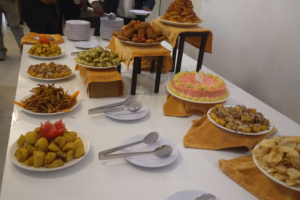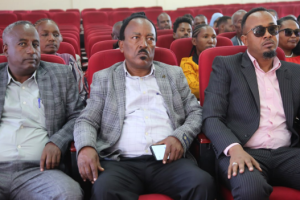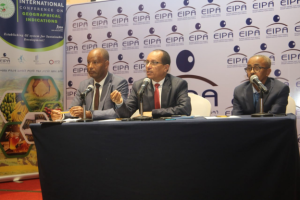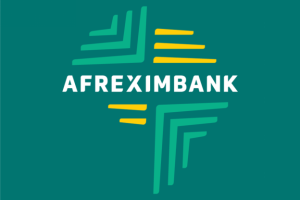
BRICS – the bloc of emerging economies comprising Brazil, Russia, India, China and South Africa – announced the admission of six new members to the group at the conclusion of the bloc’s 15th annual summit in Johannesburg last Thursday.
More than two dozen countries had applied, both formally and informally, to join the bloc, but the group’s leaders extended membership only to Saudi Arabia, UAE, Iran, Egypt, Ethiopia and Argentina for now.
If they accept the invitation, these six new countries will become active BRICS+ members from January 2024.
According to experts, the expansion of BRICS is a calculated move by the bloc’s leaders, and there is a strong strategic reasoning behind inviting each of the six countries to the group, which will now be known as BRICS+.
“The BRICS seemed to have moved in a way that is poised to maximize their economic heft,” former White House economist Jo Sullivan told Al Arabiya English.
“Most of these countries are either key commodity producers, like Saudi Arabia and the UAE, or in the case of Ethiopia and Egypt, they are on the Red Sea that connects to the Suez Canal, which is a huge point of transit for a large range of commodities,” he added.
Why these six countries?
One of the prominent goals of BRICS is to enhance cross-border trade among member nations to boost the group economically and reduce the bloc’s reliance on the US dollar.
According to experts, BRICS invited Saudi Arabia and the UAE in view of their enormous wealth and abundant fossil fuels. Saudi Arabia is also one of the leading holders of US treasury debt – the national debt of the United States issued in bonds.
On the other hand, Egypt and Ethiopia share an advantageous location on the Red Sea near the Suez, a major route for global trade. The two nations are also regional powers in Africa.
Iran – one of the most “interesting” choices according to many scholars – can assist BRICS with its vast knowledge and experience in conducting international trade while sidestepping Western sanctions.
“There are practically no economies that have been sanctioned as heavily as the Iranian economy by the US,” Sullivan said.
According to Sullivan, the inclusion of Iran will be a pointer towards the bloc’s seriousness in either dodging the impact of any future US sanctions or its ability to mitigate that blow, if and when it implements de-dollarization – a move away from the US dollar.
Iran’s President Ebrahim Raisi also expressed his support for BRICS’s efforts to de-dollarize at last week’s summit.
“The Islamic Republic of Iran very resolutely supports the successful endeavors of BRICS, in line with de-dollarization from the trade and economic interactions between the members and also making use of local currencies,” he said.
Russia is already dealing with sanctions due to the ongoing Ukraine war, while India and China have had their own flirtations with US-imposed restrictions in the past. From that perspective, Iran may be the “harbinger” to overcome the threat of Western sanctions, according to Sullivan.
The inclusion of Argentina, which is not a massive economy in South America, may also have a lot to do with the country’s openly-expressed desire to move its economy away from the US dollar by trading in local currency, a key issue among BRICS nations.
“Part of this (Argentina’s inclusion) has to do with Argentina’s keenness on de-dollarization,” Sullivan said. “The Argentinian economy may be one where they are willing to try de-dollarization and willing to experiment in terms of their currency system and achieving bilateral trade in ways that are likely to appear as appealing to BRICS.”
BRICS convened as populous regional powers, but the bloc is now looking to gather trade partners across the globe to further its economic might and achieve financial initiatives, along with holding some sway in the energy markets, according to BRICS expert, Mihaela Papa.
“The inclusion of these six nations is aimed at increasing trade opportunities and all of these states are interested in BRICS’ financial initiatives such as engaging with its financial institutions and transitioning to trade in local currencies,” Papa, a Senior Fellow at the Fletcher School, told Al Arabiya English
The road ahead
Following the expansion, BRICS now accounts for 36 percent of the global gross domestic product (GDP) and 47 percent of the world population, with 3.7 billion people residing in BRICS+.
According to experts, with 11 countries in the bloc, the group holds significant sway in bargaining with organizations such as the G7 and the global West in general.
Some scholars believe the inclusion of countries like Iran may push an anti-West agenda in the bloc, as countries like India and Brazil, who share cordial ties with the US, lean more heavily into the group that already has Russia and China and now Iran, who openly criticize the West’s dominance in the world order.
“BRICS has explicitly rejected anti-American positioning and emphasized new development ideas. However, accepting Iran is likely to enhance the group’s anti-American narratives and agendas, which have been gaining traction since Russia’s invasion of Ukraine,” Papa added.
While no statements were made by BRICS leaders on a common currency – except by Brazilian President Luiz Inacio Lula da Silva, who said the group has established a “working group to study a reference currency” – the bloc’s expansion is a strong sign that BRICS may move towards conducting more trade in local currencies, according to Sullivan.
“Lula talking about it (reference currency) at the beginning and end of the summit means there was real progress in sort of keying up the development of the BRICS currency, though there has been no big announcement yet on that,” he said.
The individual might of these countries is expected to make a significant impact in bolstering the economic development of the bloc, by forging strong bilateral ties and creating a more balanced economic world order.
Source: AlArabiya.net
BY STAFF REPORTER
THE ETHIOPIAN HERALD THURSDAY 31 AUGUST 2023





